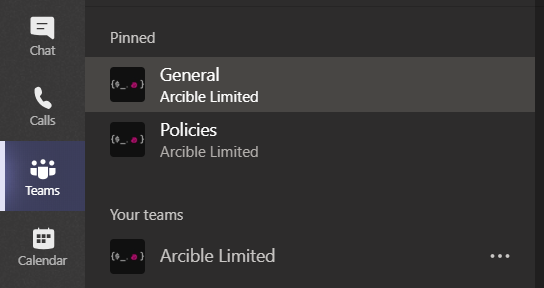Have you tried to implement Microsoft Teams only to discover that users can’t see their Exchange Server calendar in the app? Maybe your now faced with users seeing one calendar in Microsoft Teams and another different calendar in Outlook. We look at the how, why and how to use Microsoft Teams Calendar with Exchange Server.

Microsoft Teams is a cloud only service. There is no on-premises version of Microsoft Teams like there was with Skype for Business Server. If you are using Microsoft Teams but your mailboxes are still on-premises because your organisation isn’t ready to move to Exchange Online, what happens to the Microsoft Teams calendar with Exchange Server on-premises?
When using Microsoft Teams with Exchange Online, we get a Calendar app to allow us to view our calendars directly in Microsoft Teams, however, if your mailbox is in Exchange Server on-premises then you may not see get that functionality today. In this post, we’ll look at what you can do to enable the Microsoft Teams calendar with Exchange Server on-premises.
Microsoft Teams Calendar with Exchange Online
Before we get into the weeds on the issue, let’s just take a look at what it looks like when everything is set-up and working. Below is a screenshot of a Microsoft Teams client. The user for this screenshot has their mailbox in Exchange Online so the full functionality is lit up, however, what is shown below is also true of when the calendar is exposed for a fully configured Microsoft Teams Calendar with Exchange Server interop.

Requirements for Microsoft Teams Calendar with Exchange Server
The requirements to get the interop between Microsoft Teams Calendar with Exchange Server on-premises working are summarised below.
- Users must be synchronised with Azure Active Directory
- The user must have an on-premises Exchange Server mailbox
- Exchange Server hybrid must be established
- Exchange Server must be running Exchange Server 2016 or above
- OAuth authentication must be configured
With the requirements above, let’s break these down a little to provide more information on each.
Users synchronised with Azure Active Directory
This is a given really, considering that we are discussing a hybrid scenario with Microsoft Teams online and Exchange Server on-premises but it is worth clarifying. If the user is signing in to Microsoft Teams with a cloud-only identity and signing in to Exchange Server using their on-premises Active Directory identity, Microsoft Teams isn’t aware of the users’ on-premises account so cannot join the two together.
User has an on-premises Exchange Server mailbox
As with the last point, this is somewhat self-explanatory, however, there is one thing to note of importance here. If you started out with a cloud-only Azure Active Directory configuration and you created accounts for users directly in Azure AD for a pilot and then later added Azure AD Connect to synchronise accounts from Active Directory, you could run into issues.
The issue you could face is that users has already see the Microsoft Teams Calendar button in the Microsoft Teams app and that calendar doesn’t reflect the events in their Exchange Server calendar. This is because when the user was provisioned with a cloud only identity, if the Exchange Online feature of their license was enabled, an Exchange Online mailbox would have been provisioned for them.
The challenge now is that the user has two mailboxes: one on-premises and one in Exchange Online. The bigger challenge and issue you may find is that, that Exchange Online mailbox has all the users’ meetings in it and if other people were using these cloud only identities too, then there may be email in the mailbox as email sent to another user in Exchange Online would have been delivered there not to their on-premises mailbox.
There’s now a decision to be made: how to deal with the dilemma of two mailboxes.
The simplest answer is to remove the Exchange Online feature from the license on that user and then that will deprovision the mailbox in Exchange Online. The user will lose the Calendar app in Microsoft Teams until you complete the connection to Exchange Server to enable the Microsoft Teams Calendar with Exchange Server, however, once configured, it will reappear now showing their Exchange Server mailbox.
If that cloud-based Exchange Online mailbox has actual content in it that you need to retain then you are going to need to decide how to deal with it. One option could be, if the trial with cloud accounts was limited, to export what the users’ need to keep to a .pst file and then re-ingest it into their Exchange Server mailbox.
Exchange Server hybrid must be established
After you successfully set-up and have your Azure AD Connect deployment synchronising accounts to Azure Active Directory, the next step is to ensure that you have a functional Exchange Server Hybrid deployment.
The Exchange hybrid is configured using the Exchange Hybrid Connectivity Wizard (HCW) from Exchange although there are some features in Azure AD Connect to enable too such as the hybrid Exchange feature so that Azure AD Connect will sync your Exchange attributes to Azure AD.
You can get an overview of Exchange Server hybrid and the features it exposes from https://docs.microsoft.com/en-us/exchange/exchange-hybrid.
Exchange Server must be running Exchange Server 2016 or above
This is a requirement taken from the Microsoft documentation and it is true but not entirely clear we would say. You’re entire estate does not need to be running Exchange Server 2016 or above. If you read the documentation for configuring OAuth authentication with Exchange Server, for example, you might also now be confused as that refers to Exchange Server 2013.
Exchange Server 2013 and above is required for OAuth authentication between Exchange Server and the Microsoft online services. The integration for Microsoft Teams Calendar with Exchange Server requires OAuth authentication which is why you need at least 2013, however, it also requires features exclusive to 2016 and above.
Exchange 2016 Cumulative Update 3 and above introduces a new service called Autodiscover V2. This new version of the Autodiscover service adds support for new capabilities including those required and leveraged by Microsoft Teams. So yes, it is true that you need at least Exchange Server 2013 for the OAuth support but you also need Exchange Server 2016 for the Microsoft Teams support.
For the point regarding the entire estate, if you still have mailboxes that are on Exchange Server 2010 or 2013, that’s not a problem, however, those users will be unable to leverage the Microsoft Teams Calendar with Exchange features.
If you have Exchange Server 2010 or 2013 on-premises hosting mailboxes but the front-end servers receiving incoming connections are 2013 or above, those users will be able to use OAuth for authentication as the authentication is handled by the front-end, however, that alone isn’t enough to satisfy the calendar feature requirements.
OAuth authentication must be configured
As we mentioned earlier on, OAuth is used for authentication to make the Microsoft Teams Calendar with Exchange Server integration work. If you had Exchange Server 2016 servers running in the environment as the front-end servers when you ran the HCW this may already been configured for you. If you were running older Exchange Servers when you ran the HCW, OAuth won’t be automatically configured for you.
The steps to manually configure OAuth are quite complex and need to be reviewed carefully. The steps are provided at https://docs.microsoft.com/en-us/exchange/configure-oauth-authentication-between-exchange-and-exchange-online-organizations-exchange-2013-help.
Validation
If you’ve completed the all the steps above successfully, you should now be able to use the Microsoft Teams Calendar with Exchange Server mailboxes. When you launch Microsoft Teams, the Calendar app should be visible and it should represent your on-premises Exchange Server calendar.
When users’ send out new meeting invitations for Microsoft Teams meetings, the invitation will go to their on-premises Exchange Server mailbox.
Going hybrid or cloud-only
If you’re running Exchange Server on-premises today and would like to go hybrid to take advantage of Microsoft Teams, and other Microsoft 365 services. Maybe you want to decommission on-premises servers and move entirely to Microsoft 365, speak to us at Arcible to find out how we can help you.
We can help you to leverage Cloud Productivity and move your workloads to the cloud. We can also help you modernise your services and workforce to take advantage of products not just for collaboration but security, identity, and more.
If you are interested in learning about Microsoft Teams then take a look at our Microsoft Teams Tips series on YouTube featuring videos showing you and your users how you can make the most of Microsoft Teams.
2 thoughts on “Using Microsoft Teams Calendar with Exchange Server On-premises”
Comments are closed.